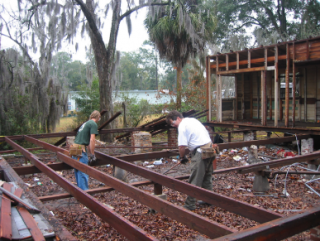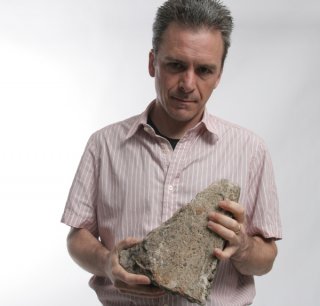Sustainable Materials Management (SMM) Web Academy Webinar: After Disaster - Deconstruction, Rebuilding and Resilience Lessons from Hurricanes Katrina and Irene
On this page:
Webinar Description
March 5, 2020, from 1:00 - 2:00 p.m. ET
This webinar explored lessons learned from two innovative post-hurricane deconstruction projects following Hurricanes Katrina and Irene. Both projects found opportunities to build a more resilient future by reducing disaster debris, creating jobs, and rebuilding the community. These lessons can inform pre-disaster and resilience planning as well as recovery efforts.
When people are displaced by natural disasters or choose to move out of harm’s way, they often leave behind their homes. Currently, many buildings with extensive damage, including damage from high winds, rain or flooding, are demolished, sending materials to landfills. During this webinar, speakers presented about the disaster recovery projects using resource conservation approaches. Instead of landfilling these buildings, they have deconstructed the damaged structures and reused the materials to build resilient floodplain parks and new buildings outside of vulnerable areas.
Recording of the webinar: After Disaster - Deconstruction, Rebuilding and Resilience Lessons from Hurricanes Katrina and Irene.
Speakers

Brad Guy is a visionary architect who has spent the last 16 years focused on research and development of building deconstruction to preserve existing building materials, and design for adaptation and deconstruction to extend the lives of renovated or new buildings. He has hands-on experience on more than 60 deconstruction projects across the nation, including post-Katrina deconstruction work. He served as Assistant Professor in the Master of Science in Sustainable Design Program, School of Architecture and Planning, The Catholic University of America. Brad was co-editor for the book “Construction Ecology”, co-author of “Unbuilding: Salvaging the Architectural Treasures of Unwanted Houses,” and the U.S. EPA grant-funded Chartwell School Design for Deconstruction Handbook (48 pp, 1.32 MB, About PDF) He was the Co-Creator and lead judge for the Lifecycle Building Challenge , a U.S. EPA/American Institute of Architects/Building Materials Reuse Association online competition. Brad is a member of the U.S. Green Building Council (USGBC) Leadership in Energy and Environmental Design® (LEED) Materials and Resources Technical Advisory Group. Brad has a M.S. in Architectural Studies from the University of Florida, and a B.Arch. from the University of Arizona. He is an Associate of the American Institute of Architects and an USGBC LEED® Accredited Professional.

Preston Browning is the owner of Salvage Works in Portland, OR, and has over 30 years of experience in finish carpentry, furniture fabrication, deconstruction, and reclaimed wood sales. From 1999 to 2003 Preston worked on The Rebuilding Center’s first deconstruction crew and established their custom shop, ReFind Furniture. Later, he relocated to New Orleans, and In the aftermath of Hurricane Katrina, he worked with the international relief organization Mercy Corps as a program manager with their Gulf Coast recovery efforts. Preston designed and implemented a deconstruction training program as well as a neighborhood support program for over 2 years. He co-authored the New York Times Op-Ed, “Fables of Deconstruction,” about the potential of post-disaster deconstruction in New Orleans. Once back in Portland, he opened Salvage Works in 2010 with his sister Rachel. Since then, they have built Salvage Works to be the premier retailer of reclaimed wood and custom furniture in the Northwest.

Tobiah Horton is a Senior Research Project Manager for the Rutgers Cooperative Extension’s Water Resources Program at Rutgers University. He manages the design/build of green infrastructure projects across the state of New Jersey funded by the U.S. EPA, the New Jersey Department of Environmental Protection, municipalities and private foundations. Integral to his work is the reuse of materials and sites – considering how places and their materials can be adapted to manage water, support habitat and welcome people. His work also seeks to demonstrate how both deconstruction and green infrastructure can be integrated into the planning and current practices of flood/coastal plain adaptation. He worked with a student team from Rutgers University that deconstructed a home after Hurricane Irene and developed a flood-resilient park using materials reclaimed and recycled from the home.
